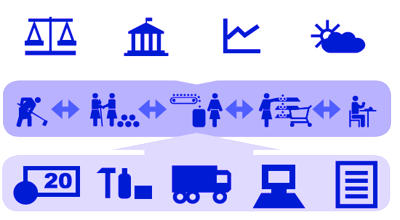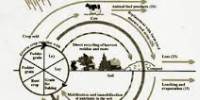The agricultural value chain concept has been used since the beginning of the millennium, primarily by those working in agricultural development in developing countries. An agricultural value chain is defined as the people and activities that bring a basic agricultural product like maize or vegetables or cotton from obtaining inputs and production in the field to the consumer, through stages such as processing, packaging, and distribution. Although there is no universally accepted definition of the term, it normally refers to the whole range of goods and services necessary for an agricultural product to move from the farm to the final customer or consumer. In an effective value chain, people at different stages of the chain actively support each other. Value chains differ from supply chains, which refer to logistics: the transport, storage, and procedural steps for getting a product from its production site to the consumer.
The value chain approach considers the role of existing chain actors, supporting actors, and the policy environment. The term value chain was first popularized in a book published in 1985 by Michael Porter, who used it to illustrate how companies could achieve what he called “competitive advantage” by adding value within their organization. The agriculture value chain concept has been used since the beginning of the millennium, although there is no universally accepted definition for the term. When everyone in the chain supports everyone else, everyone does their job more efficiently, and everyone’s livelihood is improved. Subsequently, the term was adopted for agricultural development purposes and has now become very much in vogue among those working in this field, with an increasing number of bilateral and multilateral aid organizations using it to guide their development interventions. Each person in the chain shares the common goal of satisfying consumer needs in order to increase their own profits.

Fig: Agricultural Value Chain – Common concept
At the heart of the agricultural value chain concept is the idea of actors connected along a chain producing and delivering goods to consumers through a sequence of activities. A value chain is a set of linked activities that work to add value to a product; it consists of actors and actions that improve a product while linking commodity producers to processors and markets. However, this “vertical” chain cannot function in isolation and an important aspect of the value chain approach is that it also considers “horizontal” impacts on the chain, such as input and finance provision, extension support, and the general enabling environment. It allows us to look at current challenges in a value chain, as well as the opportunities for improving the efficiency of the value chain and the benefits for everyone involved. It is used both for upgrading existing chains and for donors to identify market opportunities for small farmers.
















